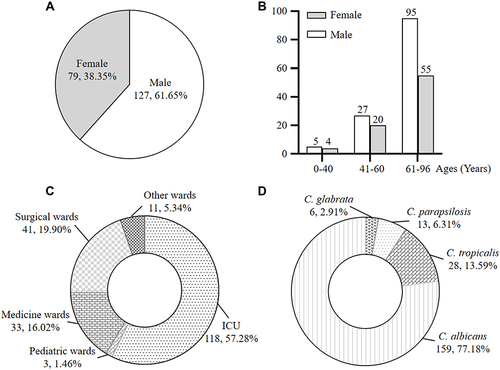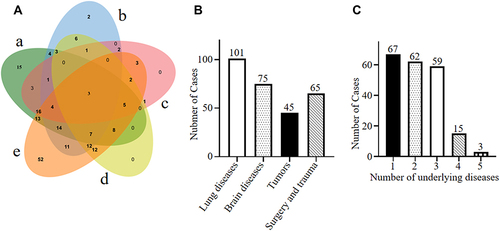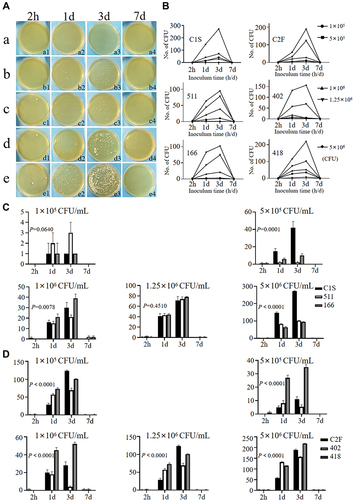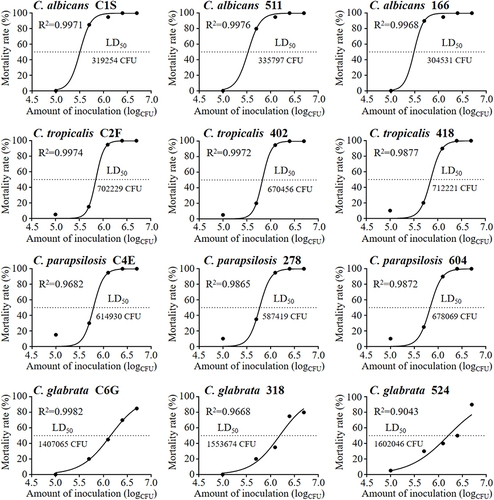Figures & data
Table 1 The Results of the Drug Susceptibility Test of These 53 Strains
Figure 1 (A, B and C) Gender, ages and department distribution of 206 patients with Candida infection, respectively. (D) Distribution of Candida species in 206 clinical isolates.

Table 2 The Distribution of IC
Figure 2 Distribution of diseases involved in 206 patients with Candida infection. (A) a Patients suffering from pulmonary conditions, b Patients suffering from cerebral conditions, c Patients with the history of tumor, d Patients with the history of surgery and trauma, e Patients with other conditions. (B) 206 patients were collected and among them, 101 patients suffered from pulmonary conditions (101/206, 49.03%), 75 patients suffered from cerebral conditions (75/206, 36.41%), 45 patients had the history of tumor (45/206, 21.84%) and 65 patients had the history of surgery and trauma (65/206, 31.55%). (C) The numbers of underlying diseases that patients suffered from. There were 67 patients (67/206, 32.52%) who suffered from 1 underlying disease, 62 patients (62/206, 30.10%) who suffered from 2 underlying diseases, 59 patients (59/206, 28.64%) who suffered from 3 underlying diseases, 15 patients (15/206, 7.28%) who suffered from 4 underlying diseases and 3 patients (3/206, 1.46%) who suffered from 5 underlying diseases.

Table 3 The Distribution of Specimen Sources of 4 Candida Species
Table 4 Results of Two Identification Methods
Table 5 Ranges of MIC/MEC, MIC50/MIC90 and Susceptibility Category of 5 Antifungal Agents Against 206 Candida Isolates
Figure 3 (A) Fungal burden at different times of the strain C1S showed that the fungal load was not high when sampling at 2 h, but on the 1st or 3rd day, the number of high-concentration spores injected into the SDA plate showed more yeast-like colonies. On the 7th day, fungal burden was not observed on the SDA plate. (B and C) C. albicans (C1S, 511 and 166) and C. tropicalis (C2F, 402 and 418) had the same trend as C1S.

Figure 4 The mortality of G. mellonella larvae enhanced with strain concentration. The results of these following strains include C. albicans (C1S, 511 and 166), C. tropicalis (C2F, 402 and 418), C. parapsilosis (C4E, 278 and 604) and C. glabrata (C6G, 318 and 524).

Figure 5 For C. albicans, C. tropicalis, C. parapsilosis or C. glabrata, there was no significant difference in median lethal dose (LD50) of G. mellonella larvae among infection models of multiple-drug resistant strains, single-drug resistant strains and non-drug resistant standard strains. But the difference among these four candida species was statistically significant (P<0.001).

